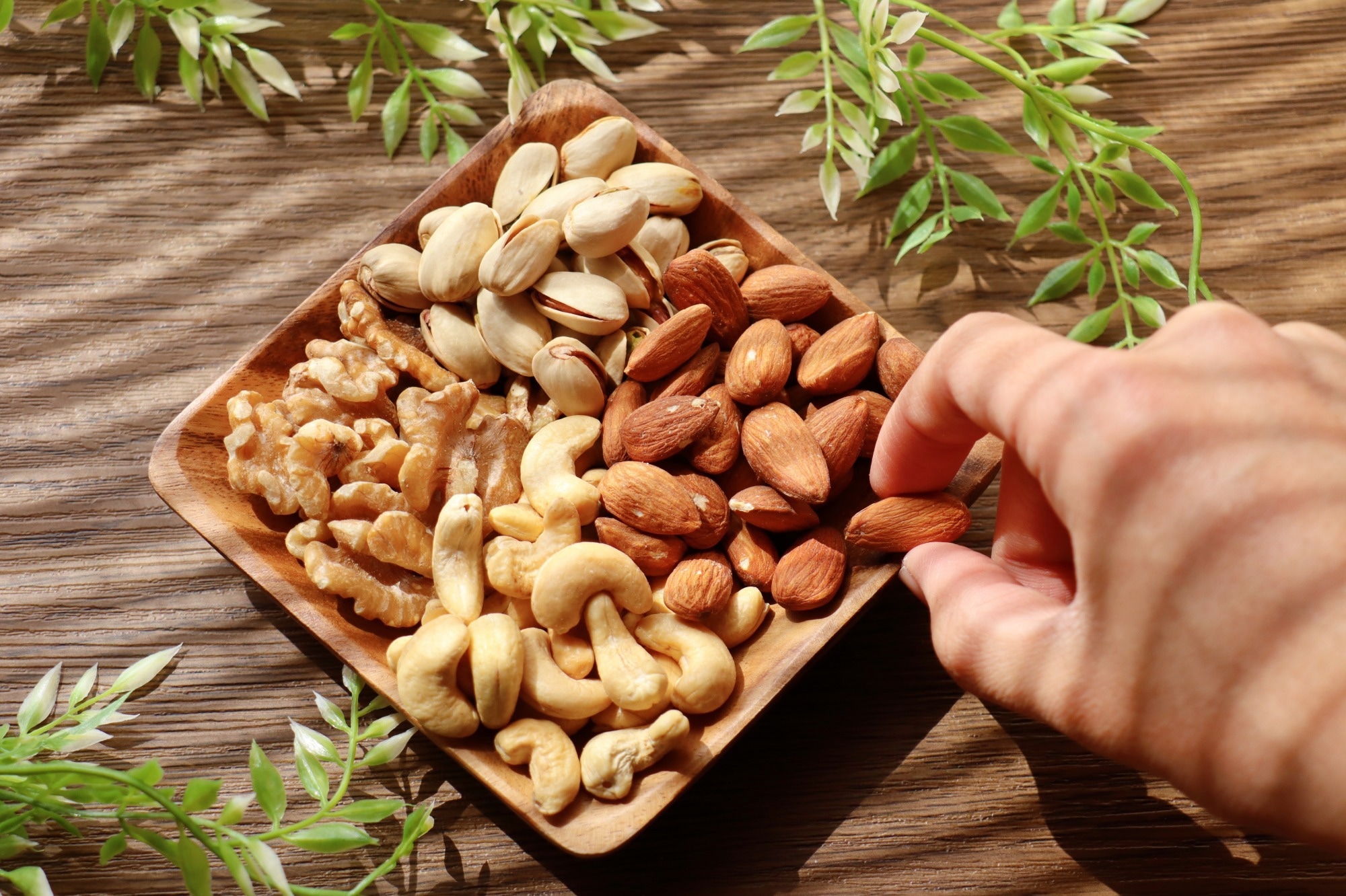A recent study published in Clinical Nutrition evaluated the long-term effects of the consumption of different nuts on brain vascular function and cognitive performance.
Study: Longer-term mixed nut consumption improves brain vascular function and memory: a randomized, controlled crossover trial in older adults. Image Credit: umaruchan4678 / Shutterstock.com
The health benefits of nuts
Nutritional interventions are effective approaches to reduce the burden of or prevent age-related conditions, including cognitive decline and cardiovascular disease. To this end, previous studies suggest that nut consumption is protective against cognitive impairment.
Studies that include nuts in the Mediterranean diet have also reported cognitive benefits in older adults. Likewise, randomized controlled trials (RCTs) have demonstrated the benefits of nuts on impaired vascular function; however, there is limited evidence for the effects of nut consumption on central arteries near the brain.
About the study
In the present study, researchers evaluate the effects of long-term consumption of mixed nuts on brain vascular function in older individuals. Eligible participants were healthy males and post-menopausal females between 60 and 70 years of age, with stable body weight and body mass index (BMI) between 25 kg/m2 to 35 kg/m2. Subjects were excluded if they had nut intolerance or allergy, conditions interfering with study outcomes, or contraindications for magnetic resonance imaging (MRI).
The current study was a single-blinded RCT with a cross-over design, including 16-week intervention and control periods and an eight-week washout period in between. During the intervention period, participants consumed 60 grams of mixed nuts, including cashews, walnuts, hazelnuts, and pistachios, daily.
Participants were instructed to adhere to Dutch food-based dietary guidelines and not consume products rich in n3-poly-unsaturated fatty acids (PUFAs). Peripheral and brain vascular function and cognitive performance were assessed at the end of each period. Cerebral blood flow (CBF) was quantified using pseudo-continuous arterial spin labeling MRI.
Cognitive performance was examined using the Cambridge neuropsychological test automated battery. Additionally, effects on retinal microvasculature, arterial stiffness, and endothelial function were investigated. Differences between intervention and control periods were assessed using linear mixed models.
Study findings
Twenty-eight individuals were included in the current study, with both sexes represented equally. The average age of the participants was 64.6, with an average BMI of 27.9 kg/m2.
The mixed-nut intervention was well-tolerated, and no protocol deviations or serious adverse events were reported. The intervention resulted in a decrease in cholesterol and carbohydrate intake and an increase in fiber intake as compared to control.
Total fat intake was higher after mixed nut intervention, with a lower intake of saturated fatty acids (SFAs) and a higher intake of cis-monounsaturated fatty acids (cis-MUFAs), alpha-linolenic acid, linolenic acid, and cis-PUFA. SFAs were 0.9 percentage points lower after the intervention, primarily due to decreased palmitic acid.
Total PUFAs were 1.3 percentage points higher, whereas total MUFAs remained unchanged with the intervention. There were no significant differences between intervention and control periods in terms of whole-brain, cortical, sub-cortical, or grey matter CBF. However, the cluster-wise analysis indicated a significantly higher regional CBF across three clusters.
CBF increased in cluster one by 5 ml/100 g/min. The mean probability of its location was in the right superior parietal lobe, lateral occipital cortex, and superior frontal, precentral, postcentral, and middle frontal gyri. CBF increased in clusters two and three by 5.4 ml/100 g/min and 5.6 ml/100 g/min, respectively.
The mean probability of the location of cluster two was the left precentral, middle frontal, superior frontal, and postcentral gyri. The average probability of the location of cluster three was bilateral in the frontal medial cortex, frontal pole, and cingulate and paracingulate gyri. Carotid artery reactivity was 0.7 percentage points higher after intervention than control.
The intervention significantly reduced carotid-to-femoral pulse wave velocity. After the intervention, brachial artery flow-mediated vasodilation, central retinal arteriolar equivalent, and arteriolar to venular ratio were higher. The central retinal venular equivalent was not different after the intervention.
Performance in a visuospatial memory task improved after the intervention, with the number of correct words in a verbal memory task increasing by 16% after the intervention. There were no differences between intervention and control periods in word recognition, psychomotor speed, executive function, stress, quality of life, sleep quality, and mood.
Conclusions
An increase in regional CBF was observed within three clusters in the left frontal lobe, bilateral prefrontal cortex, and right parietal and frontal lobe following the mixed nut intervention.
Improvements in cognitive performance within the memory domain were also observed without changes in psychomotor speed and executive function. Likewise, improvements in different characteristics of the peripheral vascular tree were evident after the mixed nut intervention.
Journal reference:
- Nijssen, K. M. R., Mensink, R. P., Plat, J., & Joris, P. J. (2023). Longer-term mixed nut consumption improves brain vascular function and memory: a randomized, controlled crossover trial in older adults. Clinical Nutrition. doi:10.1016/j.clnu.2023.05.025
Credit: Source link




